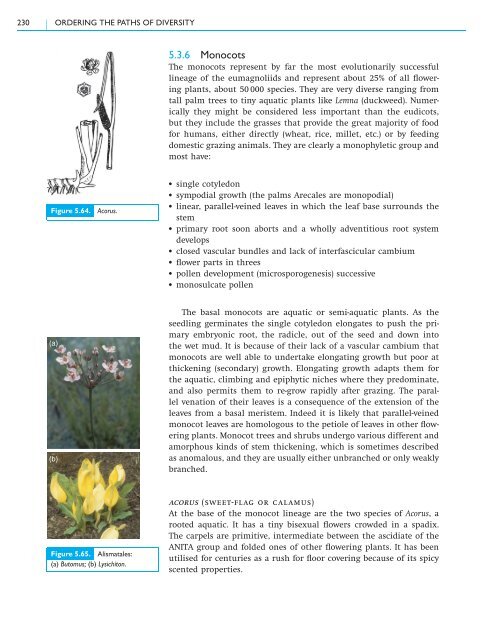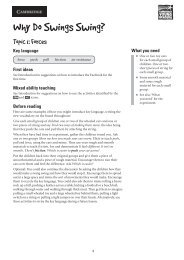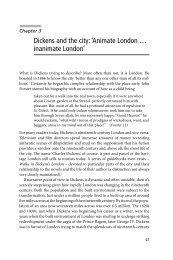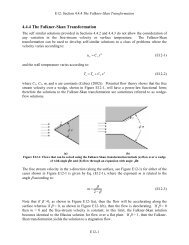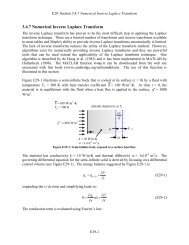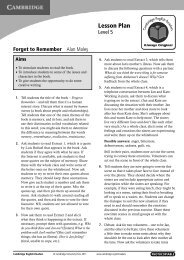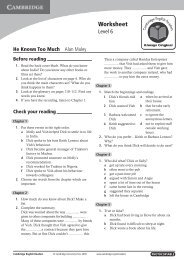5.3 Class Magnoliopsida – flowering plants - Cambridge University ...
5.3 Class Magnoliopsida – flowering plants - Cambridge University ...
5.3 Class Magnoliopsida – flowering plants - Cambridge University ...
Create successful ePaper yourself
Turn your PDF publications into a flip-book with our unique Google optimized e-Paper software.
230 ORDERING THE PATHS OF DIVERSITY<br />
Figure 5.64. Acorus.<br />
(a)<br />
(b)<br />
Figure 5.65. Alismatales:<br />
(a) Butomus; (b) Lysichiton.<br />
<strong>5.3</strong>.6 Monocots<br />
The monocots represent by far the most evolutionarily successful<br />
lineage of the eumagnoliids and represent about 25% of all <strong>flowering</strong><br />
<strong>plants</strong>, about 50 000 species. They are very diverse ranging from<br />
tall palm trees to tiny aquatic <strong>plants</strong> like Lemna (duckweed). Numerically<br />
they might be considered less important than the eudicots,<br />
but they include the grasses that provide the great majority of food<br />
for humans, either directly (wheat, rice, millet, etc.) or by feeding<br />
domestic grazing animals. They are clearly a monophyletic group and<br />
most have:<br />
single cotyledon<br />
sympodial growth (the palms Arecales are monopodial)<br />
linear, parallel-veined leaves in which the leaf base surrounds the<br />
stem<br />
primary root soon aborts and a wholly adventitious root system<br />
develops<br />
closed vascular bundles and lack of interfascicular cambium<br />
flower parts in threes<br />
pollen development (microsporogenesis) successive<br />
monosulcate pollen<br />
The basal monocots are aquatic or semi-aquatic <strong>plants</strong>. As the<br />
seedling germinates the single cotyledon elongates to push the primary<br />
embryonic root, the radicle, out of the seed and down into<br />
the wet mud. It is because of their lack of a vascular cambium that<br />
monocots are well able to undertake elongating growth but poor at<br />
thickening (secondary) growth. Elongating growth adapts them for<br />
the aquatic, climbing and epiphytic niches where they predominate,<br />
and also permits them to re-grow rapidly after grazing. The parallel<br />
venation of their leaves is a consequence of the extension of the<br />
leaves from a basal meristem. Indeed it is likely that parallel-veined<br />
monocot leaves are homologous to the petiole of leaves in other <strong>flowering</strong><br />
<strong>plants</strong>. Monocot trees and shrubs undergo various different and<br />
amorphous kinds of stem thickening, which is sometimes described<br />
as anomalous, and they are usually either unbranched or only weakly<br />
branched.<br />
acorus (sweet-flag or calamus)<br />
At the base of the monocot lineage are the two species of Acorus, a<br />
rooted aquatic. It has a tiny bisexual flowers crowded in a spadix.<br />
The carpels are primitive, intermediate between the ascidiate of the<br />
ANITA group and folded ones of other <strong>flowering</strong> <strong>plants</strong>. It has been<br />
utilised for centuries as a rush for floor covering because of its spicy<br />
scented properties.


